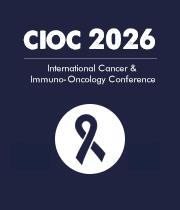Title : How well do different anthropometric measures of adiposity predict breast cancer incidence in postmenopausal women?
Abstract:
Postmenopausal breast cancer (PBC) constitutes a major proportion of global breast cancer incidence, with excess adiposity recognised as a significant modifiable risk factor. Following menopause, visceral adipose tissue becomes the primary source of oestrogen through increased aromatase activity and contributes to carcinogenesis via chronic inflammation, altered adipokine signalling, and insulin resistance. Approaches to assess adiposity therefore require careful consideration in the context of PBC risk prediction.
This critical review synthesised evidence from PubMed, EMBASE, the Cochrane Library, and NICE Evidence Search to evaluate the prognostic utility of commonly used anthropometric measures—Body Mass Index (BMI), Waist Circumference (WC), Waist-to-Hip Ratio (WHR), and height. Studies were assessed for epidemiological associations, relevance to tumour biology, and strengths and limitations in measurement accuracy.
BMI remains the most frequently applied index due to its simplicity and clinical utility; however, it does not differentiate between fat and lean mass or quantify visceral adiposity, limiting its specificity for PBC risk. Measures reflecting central adiposity, particularly WC, demonstrate stronger mechanistic and epidemiological associations and retain predictive value when adjusted for BMI. WHR may indicate body-fat distribution but is prone to measurement variability. Evidence linking height to PBC risk is inconsistent, reflecting complex interactions with early-life hormonal and nutritional exposures.
No single anthropometric measure provides adequate precision when used in isolation. A multimodal approach combining central adiposity assessment with direct methods of body-composition evaluation may enhance risk stratification. Alongside improved predictive tools, interventions targeting weight reduction and metabolic health remain essential to reduce incidence. Standardised thresholds for central adiposity and validated combined risk-assessment models are needed to support targeted prevention and improve outcomes for postmenopausal women worldwide.



